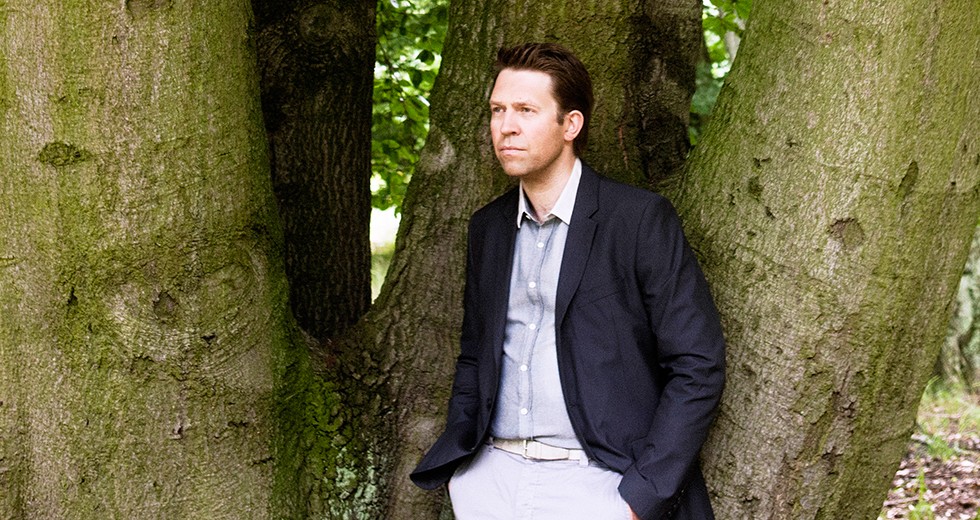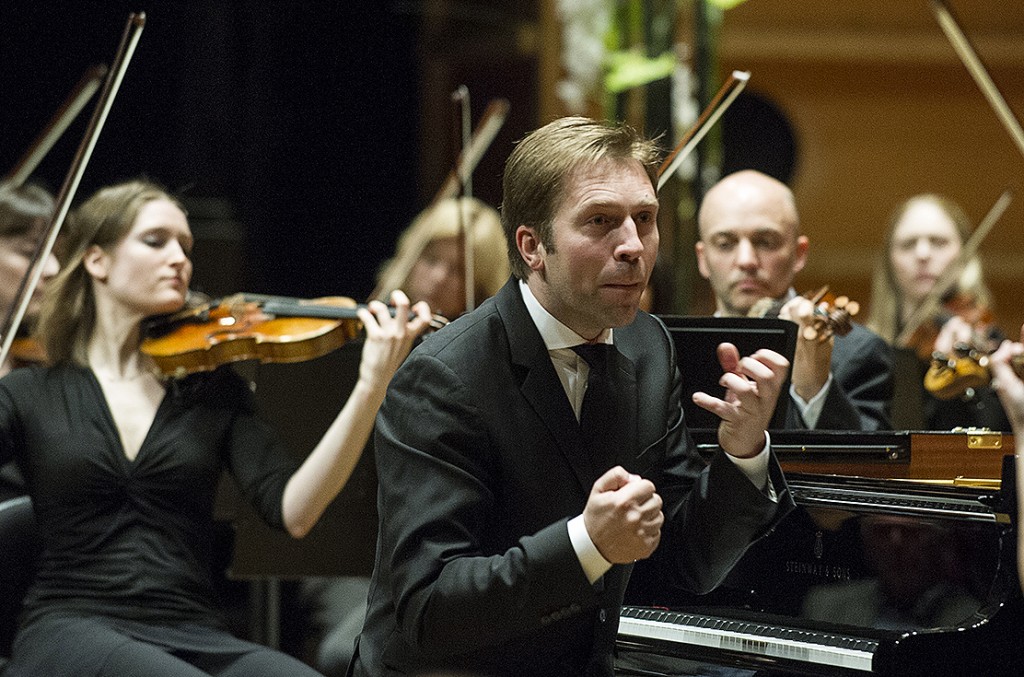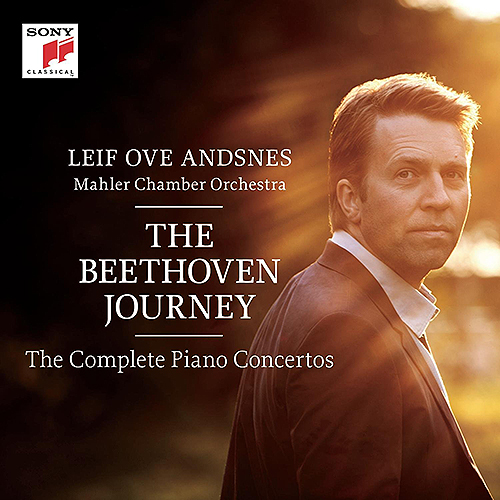
Other pianists might be trendier or more famous, but few have gained the respect, even reverence, that Leif Ove Andsnes has achieved for the rare intelligence, sensitivity and expressiveness of his playing. Now 45, the Norwegian-born pianist has won some of the classical world’s most prestigious honors, such as the Gilmore Artist Award and six Gramophone Awards, but he possesses a timeless artistry likely to be remembered long after such prizes are forgotten.
Just a few months after concluding “The Beethoven Journey,” his epic four-season focus on the master composer’s music for piano and orchestra, Andsnes will join Riccardo Muti and the Chicago Symphony Orchestra for performances Oct. 1-3 of Mozart’s Piano Concerto No. 20 in D Minor, K. 466. Coincidentally, it was the first concerto that Andsnes, at age 14, performed with a professional orchestra. “So I’m going back to an old friend here, and a piece I love very much. I’m really looking to playing with them, and Muti, of course,” Andsnes said from his home in the Norwegian coastal town of Bergen.
Considering his recent intense focus on Beethoven, it was hardly surprising that he wanted to perform something different for this program, and thus a return to Mozart seemed like the perfect choice. “I’ve been longing to be in Mozart’s world again,” he said. “With Beethoven, there is a moral goal in every phrase — these great struggles to find answers to the big questions in life. But with Mozart [he chuckles], it’s just not that big a deal. It’s just magic. It’s pure theater and conversation all the time between different groups of instruments. Every phrase is just incredible, what he does. I wanted to come back to that music, and I’m going expand my repertoire in the next years to play some of the Mozart late concertos that I haven’t done.”
But Andsnes was not able to eliminate the Beethoven connection entirely. It so happens that Beethoven loved this concerto and wrote a cadenza for the first movement that that pianist plans to play for his CSO program. “So there is still, then, a connection to Beethoven,” he said, “maybe just for me to avoid withdrawal symptoms.”
Although Andsnes has been a soloist regularly with the CSO since the 1990s, he has not appeared here with Muti on the podium. He played Brahms’ Piano Concerto No. 2 with Muti and the New York Philharmonic in 2008 or ’09, and he praised the “organic way” that the conductor shaped the piece. The two were supposed to do the same selection later with the CSO, but Muti suffered an injury and had to cancel his appearance. Then the pianist was forced to cancel a set of Muti concerts shortly before his twins were born prematurely in May 2013. “So we haven’t had a lucky beginning in Chicago together, but this time I’m quite determined that we’re going to make it,” he said.
The idea for “The Beethoven Journey,” which took Andsnes to 108 cities in 27 countries for more than 230 performances, came to him in the most unlikely of ways. He was staying in a hotel in São Paulo, Brazil, seven or eight years ago, and every time he got onto the elevator, he heard the same looped recording of Beethoven’s First and Second Piano Concertos. “I thought it would make me go mad having to listen to the same thing, but actually, the opposite thing happened,” he said. “After a couple of days, I realized it was quite refreshing to hear these short fragments of these pieces and always a new fragment. And I was thinking again how amazing, original, beautiful and provocative — all these contrasting things that this music is. It triggered something in me.”
Andsnes decided he wanted to focus intensively on Beethoven — putting the emphasis on the composer’s five piano concertos but also performing eight or 10 of his sonatas and some of his chamber music. “It’s been quite wonderful, I have to say, because as a pianist, you have such a variety and wealth of repertoire that it’s always a problem to choose,” he said. “To decide for three or four years to more or less limit myself to one composer — that was in a way liberating after so many years.”

Leif Ove Andsnes conducts and performs with the Mahler Chamber Orchestra at the 2013 Bergen International Festival. | Photo: Thor Brødreskift
For much of “The Beethoven Journey,” he performed with the Berlin-based Mahler Chamber Orchestra, including 10 residencies in 10 cities in which each they performed all five of the concertos. He picked the ensemble for the project in part because he wanted lead the concertos from the keyboard, something he had done for some 15 years with Mozart and Haydn concertos, and he thought it might be amenable to such an approach. “I thought, ‘OK, I’ll take the chance. Let’s go for the Beethovens as well,’” Andsnes said. “It’s a stretch but let me see. I wanted to learn from this Beethoven journey, and I thought I could learn much more about these pieces from the inside having to also be confronted with everything in the orchestra parts.”
He had toured with the Mahler Chamber Orchestra in 2002 and was impressed with its musicianship, so he approached the group about the project. “They were very interested,” he said. “They hadn’t done a Beethoven cycle like this, but it was quite a wild idea to commit to three years.”
Andsnes and the ensemble started performed together in May 2012 and went on to record the complete set of concertos, with their version of the second and fourth concertos winning both the Concerto Award and Recording of the Year Award from BBC Music Magazine in 2015. The project’s three CDs were released as a boxed set on Sony Classical in October 2014. “This last year, I’ve worked more than two months together with them very intensely,” he said. “We did so many concerts. Toward the end, it felt like such a free and wonderful thing to do. Everybody knew this music from the inside and that led to even freer performances and more spontaneity.”
“The Beethoven Journey” ended in late July, when Andsnes and the Mahler Chamber Orchestra performed the composer’s second and Emperor concertos before a crowd of 6,000 people in Royal Albert Hall in London as part of the summer Proms series. “The quality of music-making was exceptionally high,” wrote music critic George Hall in the Guardian. “Over the four years during which they have been engaged upon this project, orchestral players and soloist have clearly honed not only their individual performances but also their acutely sensitive responses towards each other’s momentary needs. Balance and ensemble were uniformly excellent; solo passages dovetailed flawlessly into accompaniments.”
Andsnes acknowledged mixed feelings as that concert and the entire project came to an end and he had to say goodbye to his colleagues in the Mahler ensemble. “That was difficult to leave,” he said, “and it was difficult to leave them, because it became a deep friendship. But on the other hand, I felt like, ‘OK, I really want and need to play other music now.’”
Though the pianist is moving on from Beethoven, at least for the moment, audiences can still experience his musical trek with the composer via a documentary that chronicled the project: “Concerto — A Beethoven Journey.” Directed by British filmmaker Phil Grabsky, it is scheduled for a U.S. release this fall, after run in U.K. cinemas in early September.
Andsnes got his first big career boost in 1988, when he won the silver medal at the fourth edition of Eurovision Young Musicians, a 16-country competition for classical performers younger than 19. The final round was broadcast live across Europe. The young musician also toured with the Oslo Philharmonic, performing with the ensemble at the famed Edinburgh Festival in 1989, an appearance that helped him gain an early following in Great Britain. At age 20, Virgin Classics signed him to a recording contract, and he went on make more than 30 albums for the label and its successor, EMI Classics. While much of the repertoire he recorded was familiar, he ventured frequently into more adventuresome territory as well, including works by George Enescu and Karol Szymanowski. “That kind of curiosity that I had for repertoire was matched by the curiosity within the recording industry,” he said. “It was a great time.”
Because of the rarefied standing he has achieved in the classical world today, he can set aside many of the pressures that aspiring musicians face and focus on his own priorities — both musical and personal. At the moment, that means devoting considerable attention to his children – a 5-year-old daughter and 2-year-old twins. In attempt to find the right balance between his touring and home life, he has pared the number of his annual concerts from 110 to 70.
Although he is contemplating a few ideas, he has no fixed plans for his next recording project. “I wanted to finish to ‘The Beethoven Journey’ and then see: How does it feel now and what do I want to do?” he said. He would like to focus more on French music, especially that of Claude Debussy, and he is interested in playing and perhaps recording some of the largely obscure piano music of Jean Sibelius. The composer’s output is uneven in this realm, Andsnes said, but if a performer chooses carefully, there are some choice works among it.
“I have a liberty to do things,” he said, “and that’s a wonderful thing, of course. You have to live up to certain expectations, but I don’t think about that so much anymore. I’m at the stage where I just enjoy making music, and I want to keep doing that with partners I love making music with.”
Kyle MacMillan, former classical music critic of the Denver Post, is a Chicago-based arts writer.
